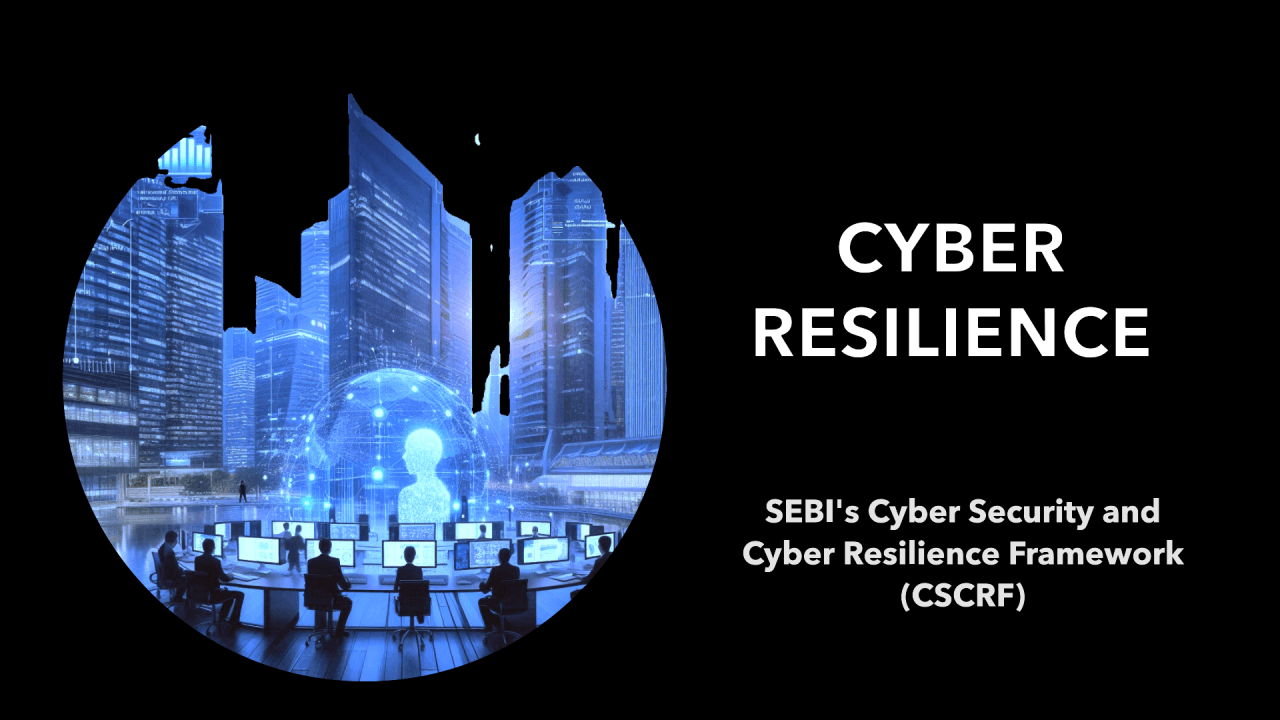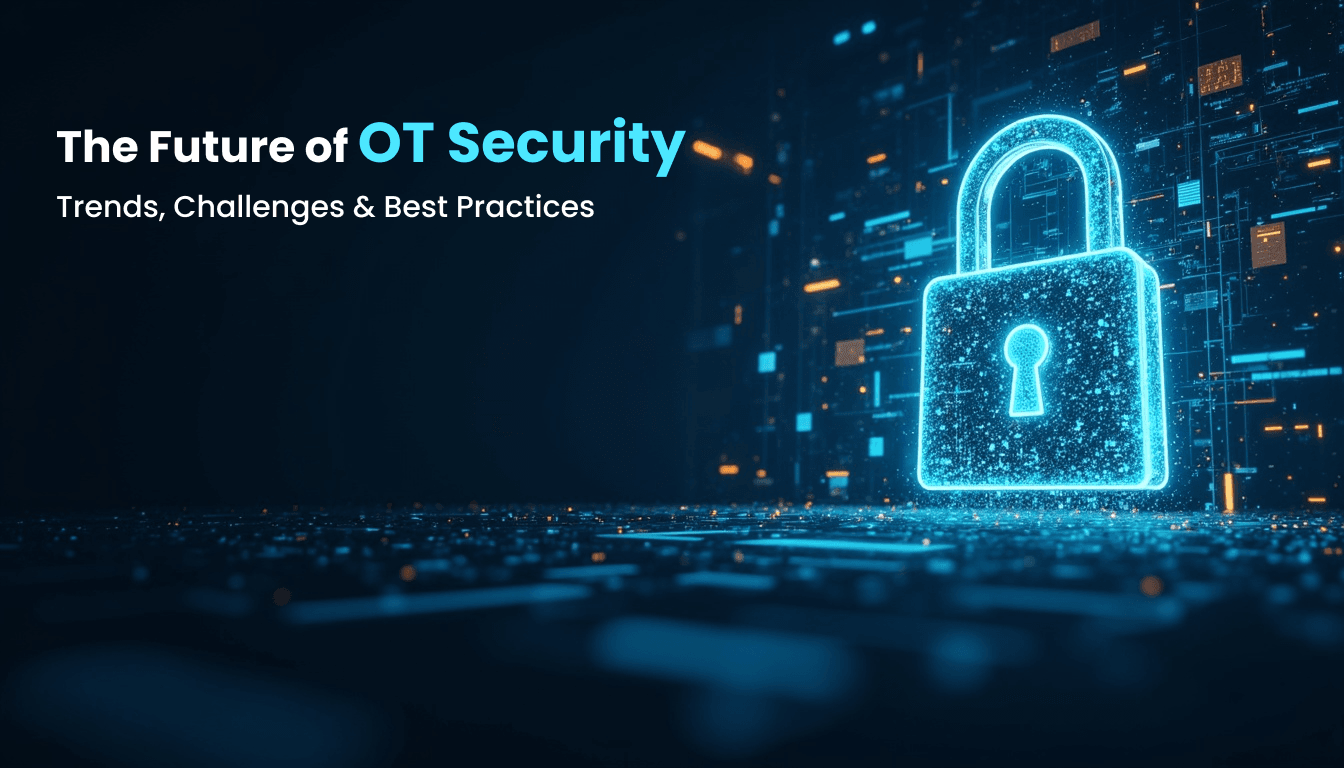In today's world, keeping our systems safe is very important. Not only do we need to protect our data, but we also must protect the machines and systems that run our factories, power plants, water treatment plants, and more. This blog post discusses the multiple advantages of using an integrated cybersecurity solution, as well as its effectiveness in combating changing cyber threats.
This is where Operational Technology (OT) security comes in.
In this blog, we will explain:
- What OT security is?
- How OT security is different from IT security?
- Real examples of attacks on both IT and OT systems?
- Why OT security is growing fast?
What Is OT Security?
OT security means protecting the hardware and software that control and monitor physical processes. These systems help run our power plants, factories, and other important operations. A problem with OT systems can cause real-world damage, like stopping a factory from working or even hurting people.
Key Points:
- Real-World Impact: An attack on OT systems can shut down production or damage equipment. For example, downtime in a factory can cost up to $260,000 per hour.
- Old Systems: Many OT systems were made a long time ago without strong security. About 70% of OT systems still use old methods, making them easier to attack.
- More Connections: As more OT systems connect to the internet, they face more risks. Gartner predicts that by 2025, 75% of OT systems will be online, which increases the chance of attacks.
OT Security vs. IT Security: What’s the Difference?
Both IT and OT security aim to protect systems, but they do so in different ways.
IT Security
- Focus: Protects data, like personal and business information.
- Risks: Mainly deals with data breaches, viruses, and other digal issues.
- Systems: Usually modern and updated regularly.
OT Security
- Focus: Keeps physical systems running safely and without interruption.
- Risks: An attack can stop a machine, cause a power outage, or even harm people.
- Systems: Often made with older technology that wasn’t built for strong security.
| Attack Type | Description | Impact on IT Infrastructure | Impact on OT Infrastructure |
|---|---|---|---|
| Phishing/Social Engineering | Deceptive tactics used to trick users into providing sensitive information. | Often used to gain unauthorized access to systems and networks, facilitating data breaches and further cyberattacks. | Often used to gain unauthorized access to systems and networks, facilitating data breaches and further cyberattacks. Indirect risk; compromised IT credentials can grant attackers access to OT systems, though direct phishing is less common. |
| Ransomware | Malicious software that encrypts data or systems until a ransom is paid. | Disrupts access to critical data and IT services, causing operational downtime and significant financial losses. | Can halt industrial processes and production, leading to potential physical damage and safety risks. |
| DDoS Attacks | Overwhelms systems with a flood of traffic to disrupt service availability. | Causes websites, applications, and network services to become inaccessible, affecting business continuity. | Can overload network components and control systems, interrupting production processes and industrial operations. |
| Supply Chain Attacks | Infiltration through compromised third-party vendors or software updates. | Impacts multiple IT systems by injecting vulnerabilities via trusted channels, resulting in widespread breaches. | Can compromise OT systems via connected software or hardware, potentially disrupting industrial control and safety mechanisms. |
| Insider Threats | Threats originating from trusted individuals within an organization. | May lead to data leaks, unauthorized access, and manipulation of IT resources; these threats are often challenging to detect | Can result in deliberate or accidental changes to control systems, causing production halts or safety incidents. |
| Malware/Remote Code Execution | Malicious code executed remotely to take control over systems. | Exploits vulnerabilities to steal data, install backdoors, and disrupt IT networks and applications. | Can hijack control systems, leading to erratic machine behavior, process shutdowns, or unsafe operational conditions. |
| SCADA/ICS-Specific Attacks | Targeted attacks on industrial control systems and SCADA networks. | Generally not applicable, as typical IT systems do not use SCADA/ICS architectures. | Directly impacts control systems, potentially causing physical damage to equipment and compromising operational safety |
| Physical Tampering | Unauthorized physical access to modify or disrupt hardware components. | Rare in IT systems due to robust physical security measures. | Direct interference with machinery or control panels can lead to immediate operational failures and hazardous conditions. |
Examples of Real Attacks
Attacks on IT Systems
Phishing Attacks: Example: In 2013, attackers sent fake emails to employees at Target. This trick led to the theft of data from over 40 million customers. Research shows that more than 90% of data breaches start with phishing.
Ransomware: Example: In 2017, the WannaCry ransomware attack affected many organizations worldwide, including the UK’s National Health Service (NHS). This attack forced many to pay ransom money, and overall damages were estimated to be over $20 billion.
DDoS Attacks: Example: In 2016, the Dyn DDoS attack overwhelmed a DNS provider. This caused big websites like Twitter and Netflix to go offline. In 2020, DDoS attacks became more than 50% larger on average.
Supply Chain Attacks: Example: In 2020, the SolarWinds hack affected thousands of companies and government agencies. Attackers inserted malware into SolarWinds software, which then spread to many organizations.
Insider Threats: Example: In 2019, the Capital One breach happened partly because an insider made mistakes. This breach affected over 100 million customers. Studies show that insiders are involved in about 60% of security incidents.
Attacks on OT Systems
SCADA and ICS Malware: Example: The Stuxnet attack in 2010 was designed to damage Iranian nuclear centrifuges. This attack showed how malware can cause physical damage.
Remote Code Execution (RCE): Example: In 2018, hackers tried to change chemical levels at a water treatment plant in Florida by taking control of the system remotely. This shows how dangerous RCE attacks can be when OT systems are online.
Supply Chain Attacks: Example: The Triton attack in 2017 targeted a petrochemical plant by attacking its safety systems. This could have led to serious safety problems.
Physical Tampering and Insider Attacks: Example: There have been cases where someone inside a company changed system settings on purpose, causing machines to shut down and production to stop.
DDoS on OT Networks: Example: In 2015, parts of Ukraine’s power grid were attacked using a mix of malware and DDoS. This caused power outages and showed that OT systems are also vulnerable to DDoS attacks.
Why Is OT Security Growing Fast?
Several reasons are driving the growth of OT security:
- Digital Change: Factories and power plants are using more digital tools, which means more systems are online. This makes OT systems more vulnerable.
- Old Technology: Many OT systems are old and not built to face modern cyber threats.
- More Attacks: There has been a big rise in attacks on both IT and OT systems. Some areas have seen a 200% increase in attack attempts.
- Strict Rules: Governments now require stronger security for critical systems. This makes companies spend more on OT security.
- Smart Investments: When a system goes down, it can cost a lot of money. For example, a factory could lose up to $260,000 per hour of downtime. This makes investing in OT security a smart move.
Conclusion
As our digital and physical worlds get closer, protecting our OT systems becomes more important than ever. OT security is not just about protecting data—it’s about keeping our factories, power plants, and other important systems running safely and smoothly.
The OT security market is set to grow from $11.1 billion in 2020 to nearly $25 billion by 2025. Now is the time to review your security plans. By protecting both IT and OT systems, you can avoid costly attacks and keep your operations safe.
Learn and Detect with WhizRange & ZeroHack XDR Suite for OT
To support your learning journey and make cybersecurity more engaging, we offer WhizRange a cutting-edge platform that provides immersive, simulation-based experiences in OT security. With WhizRange, you can tackle real-world OT security challenges in a safe, risk-free environment. Whether you're new to OT security or looking to improve your skills, WhizRange offers various scenarios and exercises that mimic actual cyber threats. Dive into WhizRange today to boost your cybersecurity expertise!
In addition, to overcome these challenges, we offer the ZeroHack XDR Suite for OT, an advanced cybersecurity solution with a centralized, scalable design. The ZeroHack XDR Suite for OT delivers unmatched security with these five key components:
- ZeroHack T OT: Uses decoy technology to mimic critical OT assets like PLCs, SCADA systems, and HMIs. It creates a network of virtual decoys to attract attackers away from real systems. With continuous threat intelligence updates, it stays ahead of emerging threats to protect key infrastructure in energy, utilities, and manufacturing.
- ZeroHack-N OT: A Network Intrusion Detection System (NIDS) designed for OT environments. It monitors network traffic in real time, detects threats quickly, and provides actionable alerts to security teams.
- ZeroHack Asset Management OT: Offers full visibility into all connected devices through continuous scanning. It keeps an up-to-date inventory of network assets, helps identify vulnerabilities, and ensures better operational oversight.
- ZeroHack EDR OT: An Endpoint Detection and Response system tailored for OT. It uses machine learning and advanced analytics to spot anomalies and potential threats at the endpoint level, enabling fast threat detection and response while ensuring compliance with industry standards.
Explore the WhizHack’s ZeroHack XDR Suite for OT and WhizRange today to transform your OT security strategy and ensure your critical systems are well protected.
- What do you think is the biggest challenge in securing OT systems in your organization?
- Have you experienced any OT security incidents or close calls?
- Are you considering using simulation-based platforms like WhizRange to train your staff on OT security?




